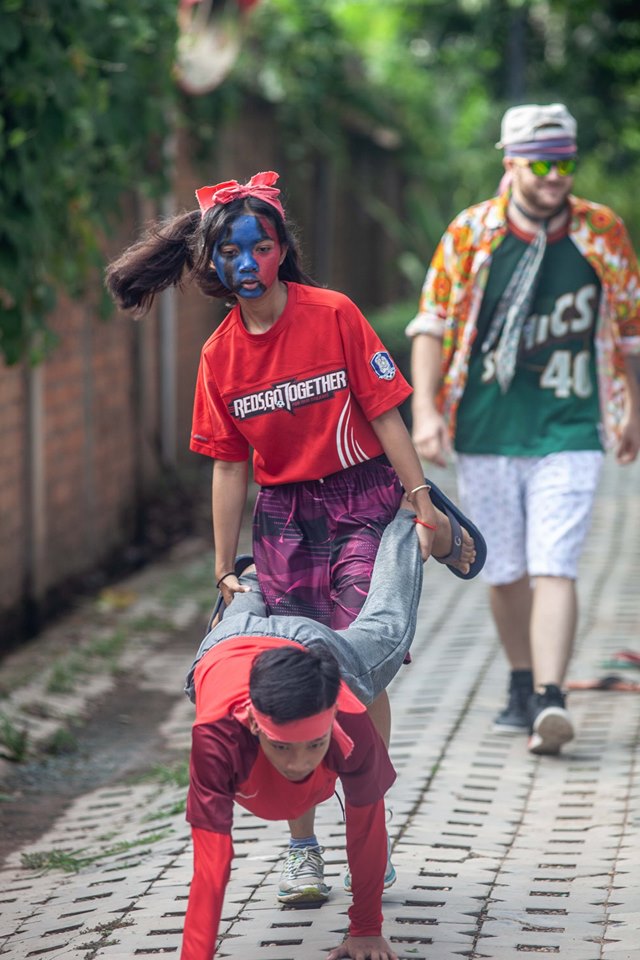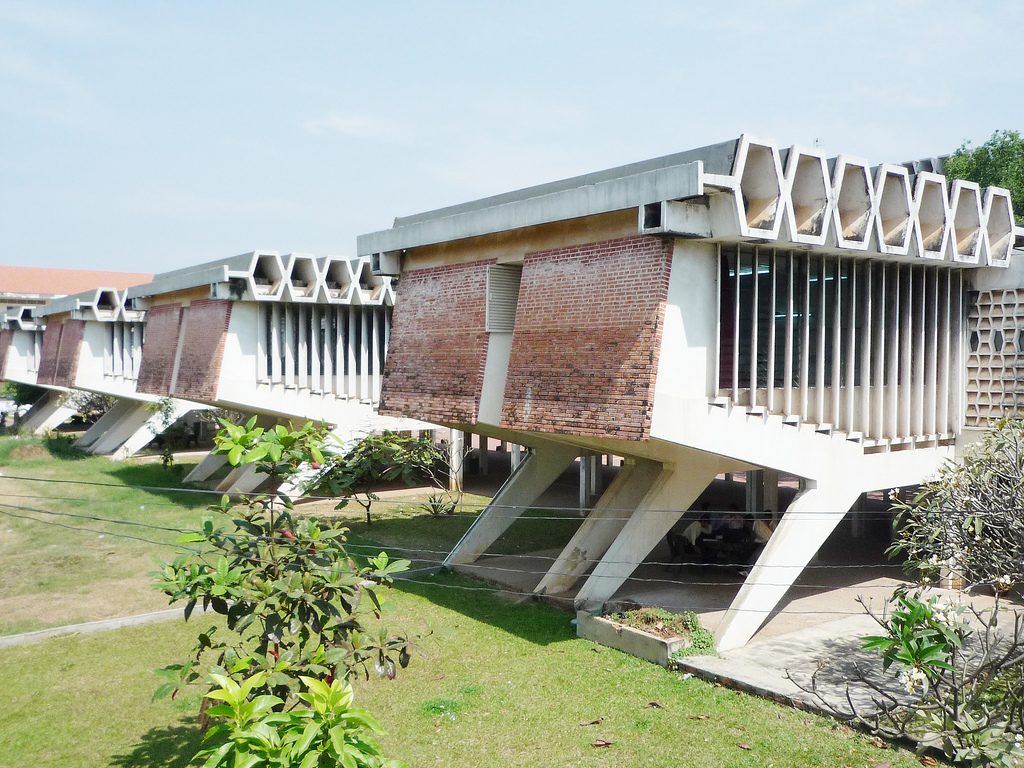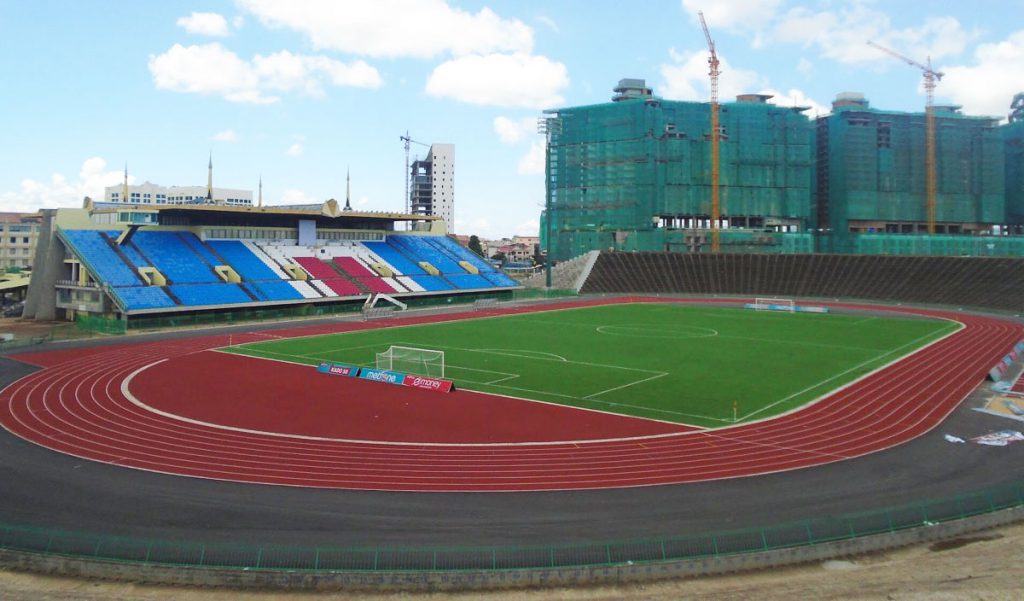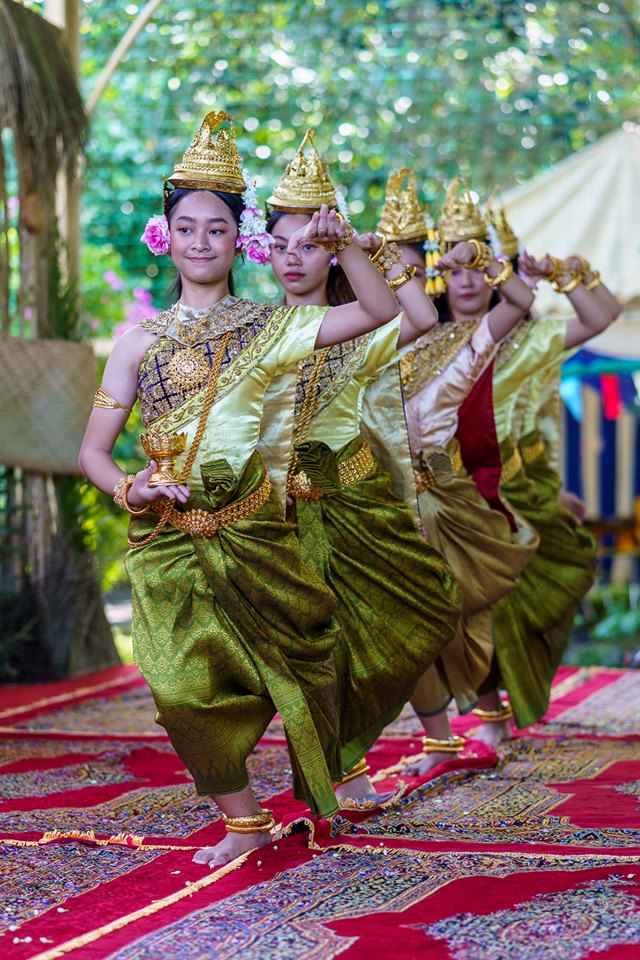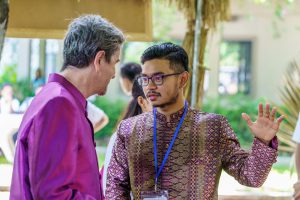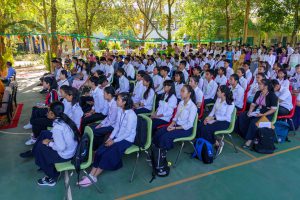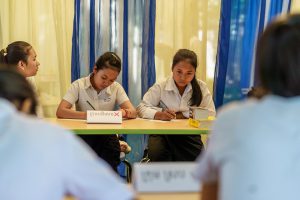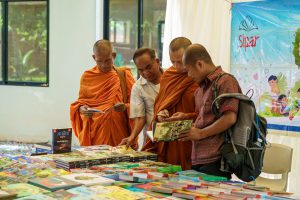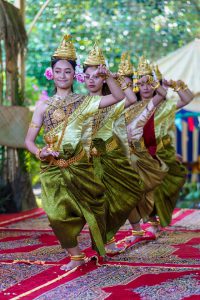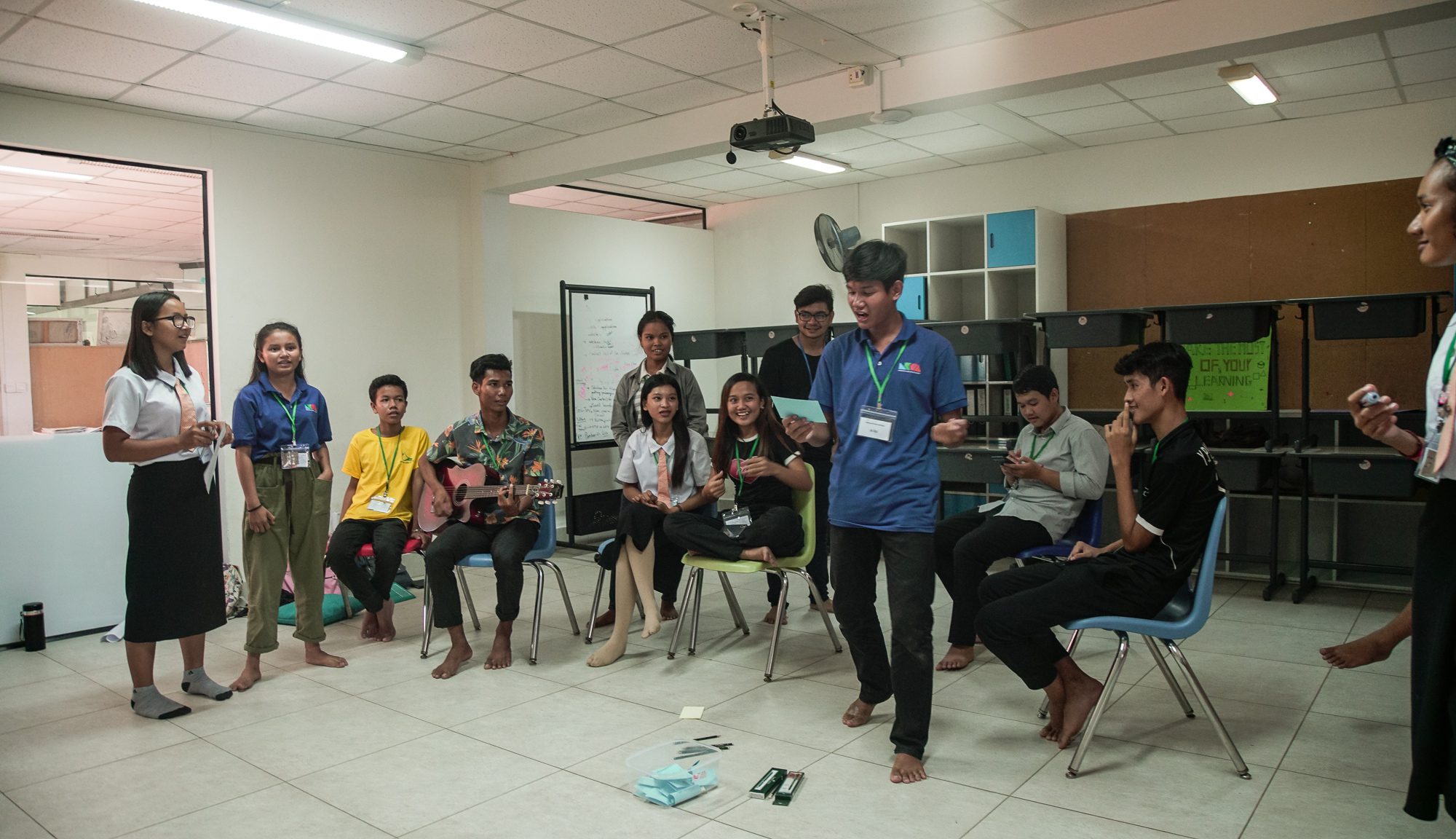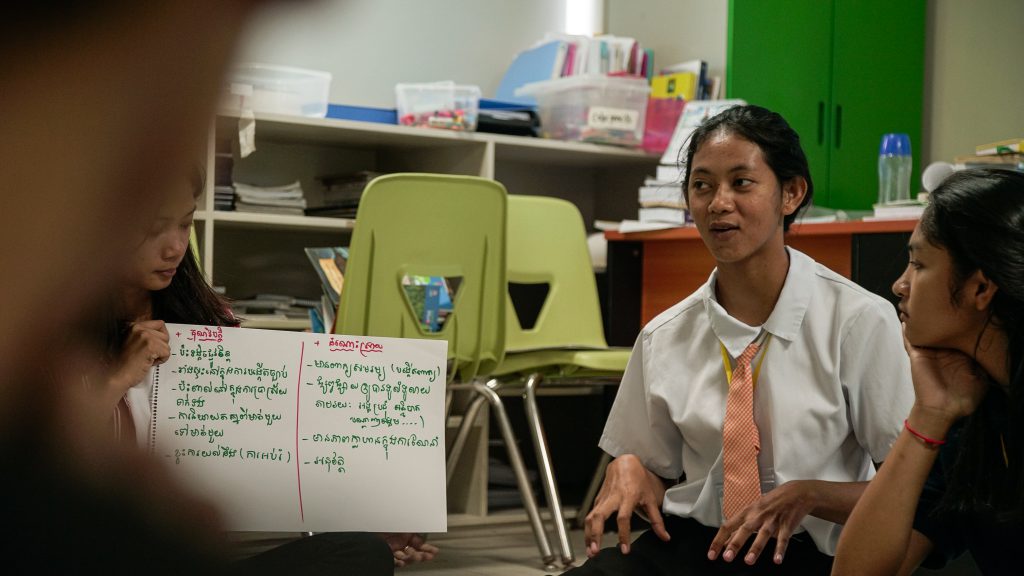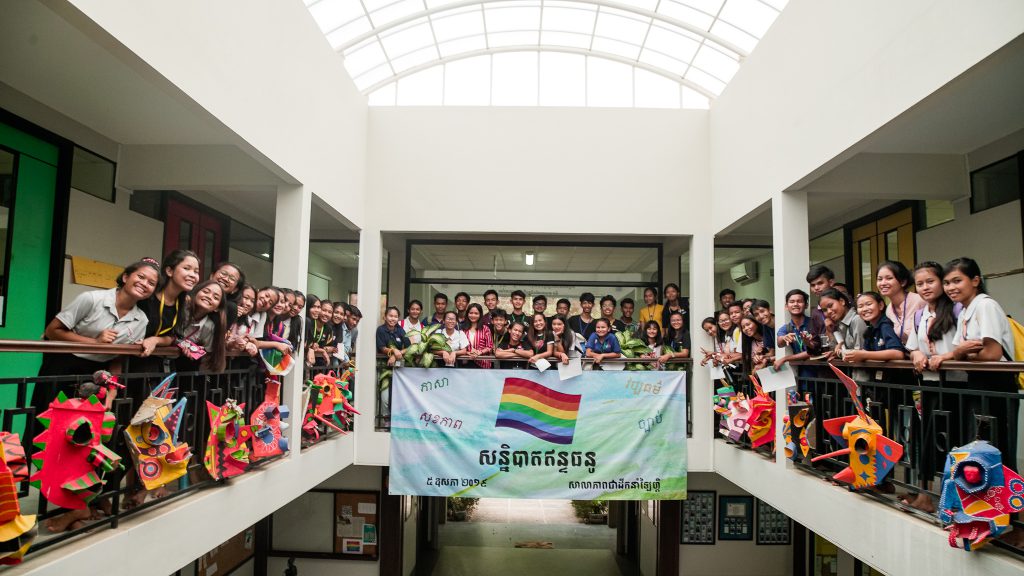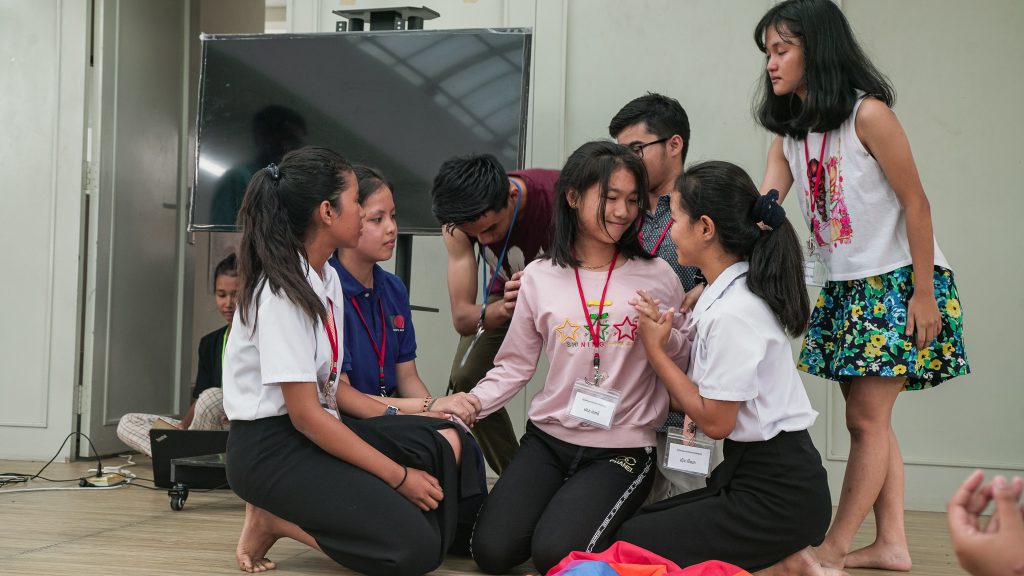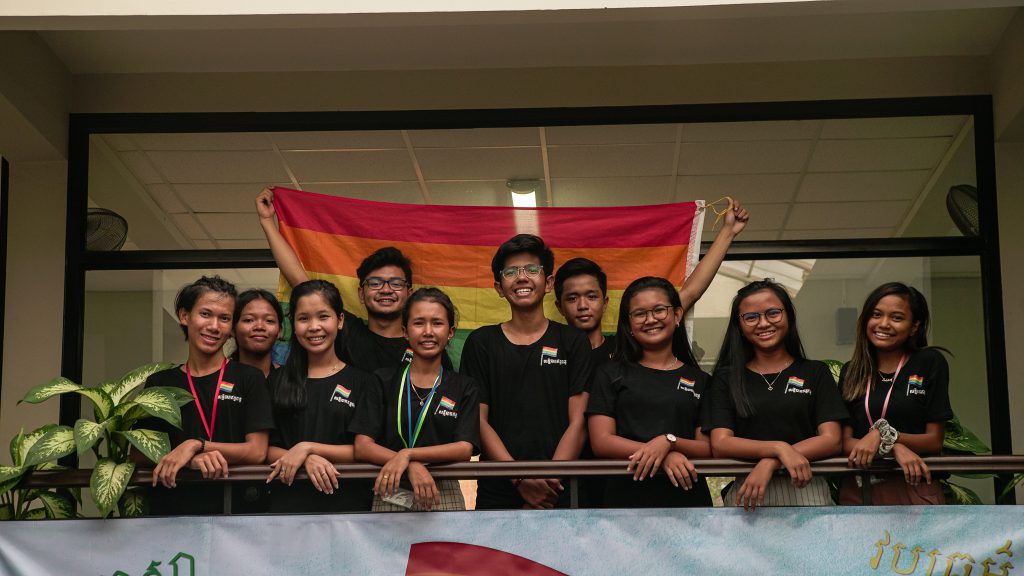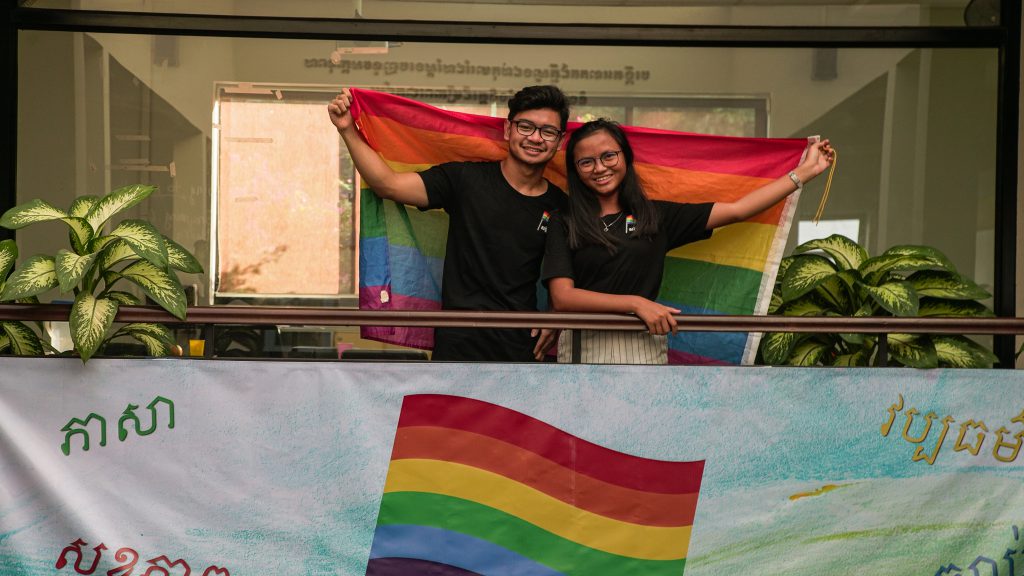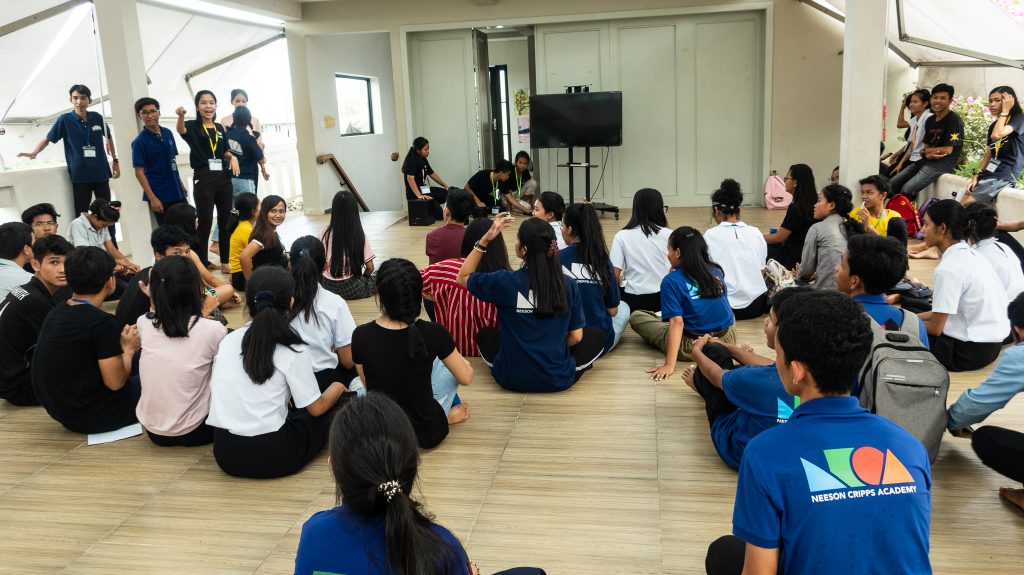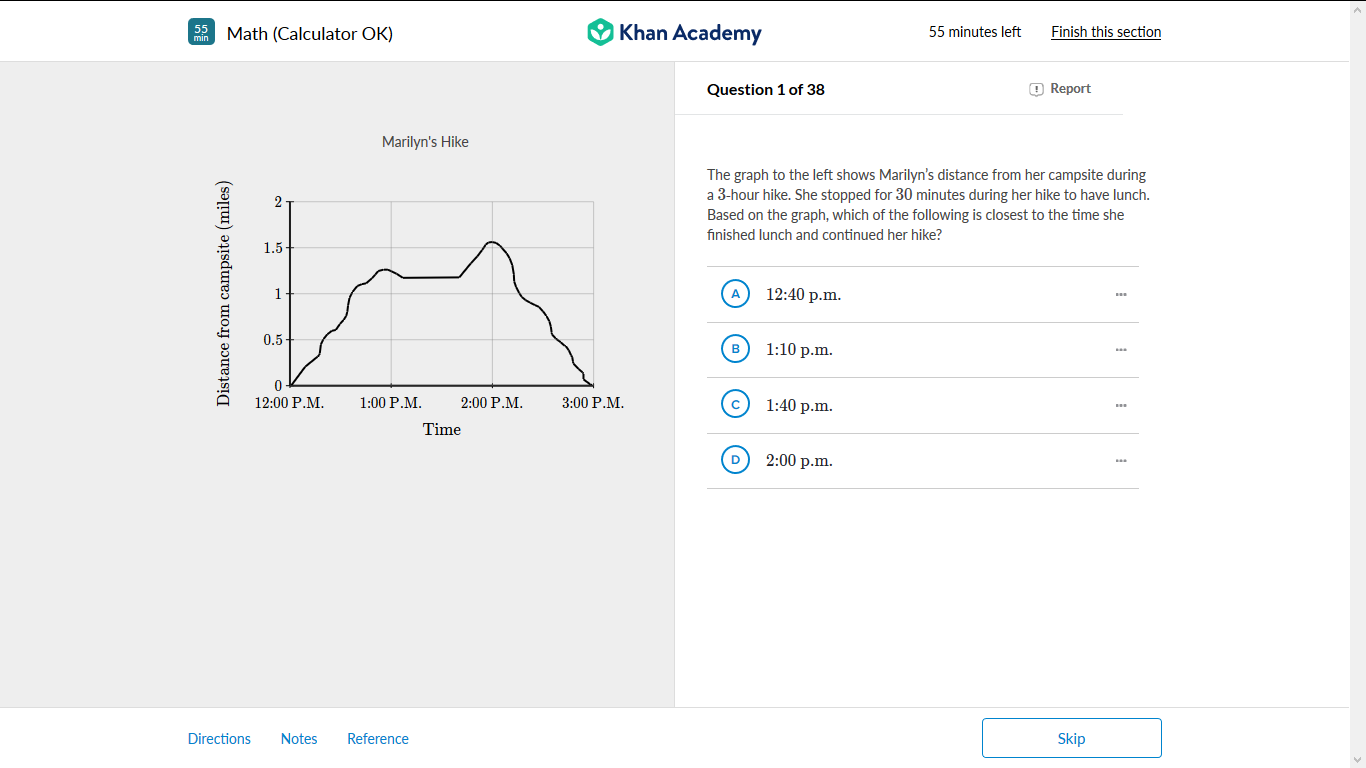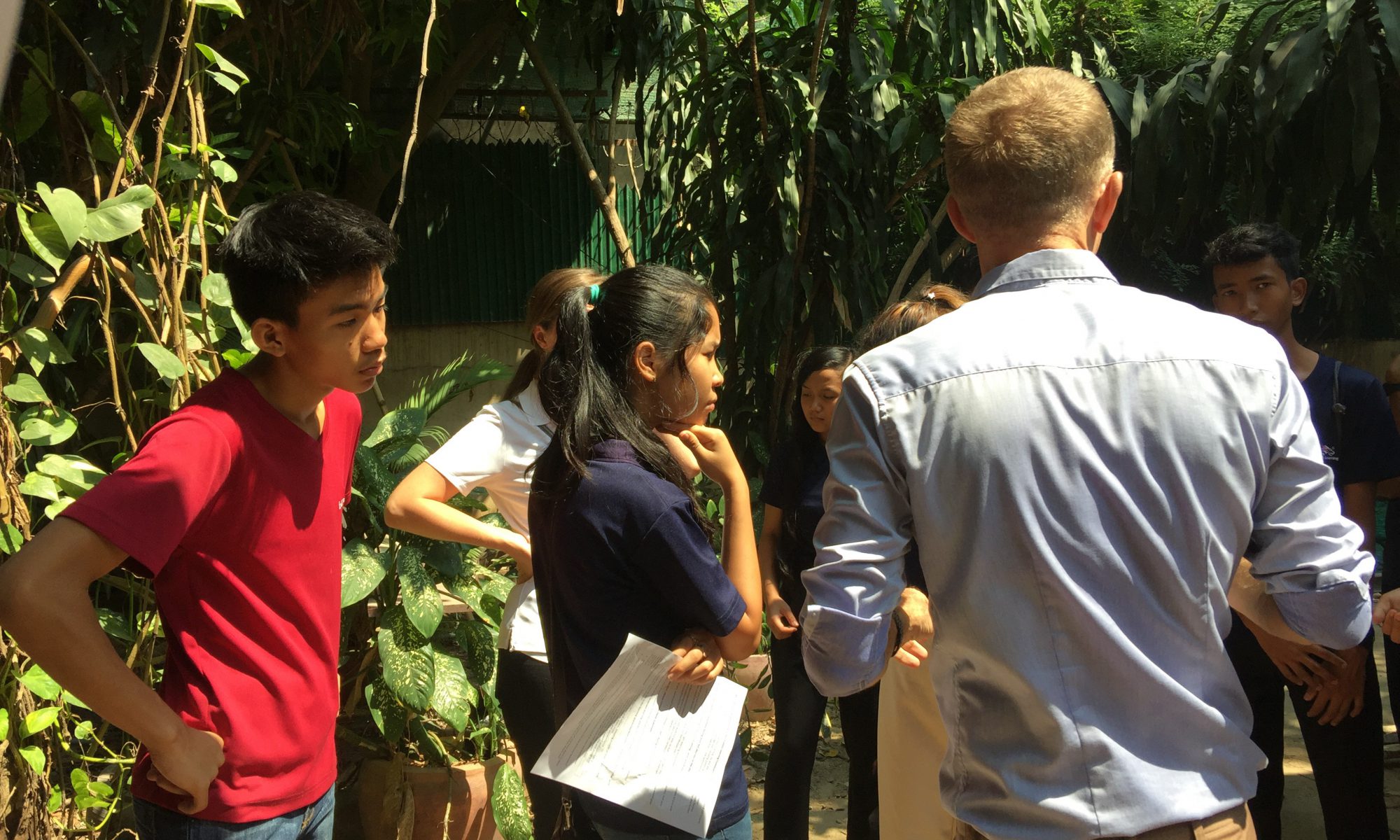The Man Who Build Cambodia
“The Man Who Build Cambodia”, a 30 minutes documentary produced by Christopher Rompré was an inspiration to Cambodians and especially to students in the field of architecture. I remembered watching this documentary, with my best friend and my favorite engineering facilitator a year ago, it gave me goosebumps all over my body.
The documentary pictured the beautiful design concept and innovative architectures that Vann Molyvann has built during the 1960s. All of the design he produced incorporate all the surrounding aspect including people, nature, technology, and culture, which made very uniques and sustainable.
The documentary motivates me to write a biography about his personal life and career live. Below is the biography. Please Enjoy!
Vann Molyvann (1926 – 2017) |
 |
Vann Molyvann, known as the “The Man Who Built Cambodia”, was one of the most well respected and influential architects in Cambodia. He was the state architect leader, assigned by the King Norodom Sihanouk, who oversaw over 100 projects both national and international during the “Sangkum Reas Niyum”, the man who blend modern styles to make it suitable with Cambodia climate, culture, geography, vernacular, and ancient design to his works, and the man who lead the New Khmer Architecture movement. To understand more about his unbelievable achievements and spirit, let understand his early life.
Molyvann was born on November 23, 1926, in Ream, Kampot provinces (which is located at the lower west side of Cambodia), Cambodia. His parents’ hometowns play an important role in his successful career. He has his father live in the rural side of Cambodia, while his mother lives in Phnom Penh, the Capital city of Cambodia. Being raised in two completely different environments has led him to fully immersed in the environment and the atmosphere surrounded Vann. Vann grew up with one younger sister and one older brother. He was a successful student in his school life; he was one of the only few students to get his national diploma in 1955 from Preah Sisowath Highschool Phnom Penh. Afterward, at the age of 20, Vann received a scholarship in the Law degree in a university called Sorbonne, in Paris, France. The reason that he apply for Law because at that time no one knows that is architecture and that lawyers make a lot of money. However, after being a law student for one year, he switches from law management to architecture because he failed the Latin part of his Roman law exam. In 1951, Vann finished his architecture degree at France, which is one of the first very international degrees that Cambodians receive. By majoring in architect was very brave and smart of him, because not many people are considering into this field and there is a myth in Cambodia that “if you are an architect, you won’t get a wife”. He continues to live in France for another decade and returned to Cambodia in 1956, which is three years after Cambodia gained its independence from France.
What makes Vann’s so special and essential to Cambodia architecture was his genius ability to adopt modern principle styles to Cambodia that really comprise the geographical landmark, perverse culture, and socioeconomic condition. His biggest influencers in architecture that crafted him as a passionate and cutting-edge modern styles architect was a combination of Charles-Edouard Jeanneret (known as Le Corbusier), a swiss-french architect and urban planner, modern architecture philosophy and ancient Angkorian tenets. Vann’s is so skillful and soulful of what he is doing, he caught so much attention from the public and especially the king, which then the king designated him as state architecture. After he is in control, Cambodia building is full of love, creativity, and simplicity and in 23 years (1957 to 1970) Vann has helped to design over 100 projects. Those structures ranging from the Independence monument, National Olympic Stadium, and Chaktomuk Conference Hall to the Institute of Foreign Languages, Bassac Riverfront project, and National Bank of Cambodia. In addition to his amazing design in the building, but he is also very superb with planning infrastructure of the Phnom Penh city, which made the city the most eye-couching city in the region.
Vann’s has everything as an architect including good communication skill, strong in drawing/sketching, excellent sense of design, great sense of business, and passion. The three principles that help Vann to be a successful architect were: passionate with his work, creativity, and good communication skill, He was so passionate in what he is doing for his country, he was the forefront of the New Khmer Architecture movement, known as nationwide of building design school, along with Lu ban Hap and Mam Sophana. This movement has Influenced and encourages buildings all across Cambodia, between 1953 to 1975, to use of new construction materials, references to pre-existing techniques, to use the natural airflow and shade and landmark, and ornamentation from the Angkorian style. Vann’s works are full authenticity, creativity, heroically, and soul, and as a result, his works inspired many people around the world and better than British architecture. The architect is different from the artist; the artist can pick up paint and do a painting, however an architect need benefactor to believe in their vision to make it become real. Since Vann was so trustable and communicable, he had made a strong bond with King Sihanouk, which made the king as his benefactor for all of his novel visions.

Despite his huge impact on planning and building Cambodia, many Cambodia’s and people around the world known Vann very little. Many of his great legacies have been destroyed during the Khmer Rouge regime, such as the National Bank of Cambodia and Medical lab. For his buildings that are not being disturbed by the Khmer Rouge are still very much appreciated and being studied all over Cambodia. Moreover, through these vibrant achievements, Vann Molyvann has brought Cambodia to its stand on the international stage, receiving the Nobel Prize in the Nikkei Asia in 2013, and proof the world that Cambodia is as capable of during great works as the world.
Works Cited
Bertin, Rémy. “New Khmer Architecture.” New Khmer Architecture, 1 Jan. 1970, newkhmerarchitecture.blogspot.com/.
Eimer, David. “Vann Molyvann: the Unsung Hero of Phnom Penh Architecture.” South China Morning Post, South China Morning Post, 8 Feb. 2014, www.scmp.com/magazines/post-magazine/article/1421349/vann-molyvann-unsung-hero-phnom-penh-architecture.
“Learn about Vann Molyvann.” Famous Birthdays, www.famousbirthdays.com/people/vann-molyvann.html.
Marissa. “Remembering the Works of Vann Molyvann, the Revered Khmer Architect.” Culture Trip, 28 Sept. 2017, theculturetrip.com/asia/cambodia/articles/remembering-the-works-of-vann-molyvann-the-revered-khmer-architect/.
Nakura, Zaie. “Legacy of Vann Molyvann.” LXC, 6 Oct. 2017, www.thelxc.com/en/2017/09/29/legacy-vann-molyvann/.
“New Khmer Architecture.” The Vann Molyvann Project, www.vannmolyvannproject.org/new-khmer-architecture/.
Bridges I had build with my Education Essay for a Research Program
The bridges that I have to build with my education are the network between people across all levels, the impact to communities all around my country, the confidence to pursue my passions, and the capability to identify interdisciplinary fields of study. The education I absorbed from textbooks and the many hours spent lectures from my learning facilitators is the foundation of all the bridges I have build. For example, when I co-authored the Cambodian Economy book, I used my foundation in economics, current events and politics to share to Cambodian 13 – 18 year olds, the key components that make up their country’s economy. Everything needs a foundation, but a foundation alone will not bridge. So, all of my curiosity from all areas of subjects and additional research is the joint between platforms on my bridges. I was able to write a book that is engaging in secondary and high school students by using powerful phrases, engaging language, interviews, and quotes from other sources. To finish off my bridge, I needed the finishing infrastructure and all the aesthetics and I was able to do that from extracurricular activities, events in which I participated, and the soft skills I have learned. So, I used all the soft skills to lay out the content in a professional book publishing software.
I believe that everything we learn will help us to strengthen our bridge in some way. Through participating in the Pioneer Research Program, I believe that I will be able to build a stronger and more resilient foundation for the bridges to create positive changes in my communities. In addition, through my experiences of completed multiple projects, the biggest barrier for me to expand my influence in the things I did was my background research and my foundations. In order to embrace a bigger change in bigger issues with bigger audiences, a stronger foundation has to be created and the only way to do that is through in-depth and thorough research. Therefore, Pioneer Research Program will provide me the necessary medium to improve my foundation, allow me to explore something new, reduce the risk of failing, and create a path for bigger changes to happen.
Khmer Literature and Culture Festival
110 change-makers hosted the First Khmer Literature and Culture festival at the Liger Leadership Academy — The biggest event yet for the academy.
We spent more than two months in the Khmer essential class to organize the entire event.
The hard work and the inspiration from all the students is an exemplary demonstration of how much preserving and promoting literature, history, tradition, and cultures to other high school peers mean to us.
To put together a successful event with over 400 participants from five different public and government high schools, there was a lot of hard work, creativity, and responsibility from everyone.
I started as the planning committee to help structure the plan for the event. I have the leadership and the vision to ignite the motivation, momentum, and mission for the team to begin. I was contented that my skills were a valuable asset to the team; I also knew that there were people who are better at designing interactive booths, organizing advanced logistics, and communicating with hundreds of participants. According to Phil Jackson, “The strength of the team is each individual member. The strength of each member is the team.” This shows that it is more efficient and effective to organize a successful event if everyone’s focus on their specializations and trust the team expertise on other tasks.
Not all things go as planned, therefore in the middle of planning, the team had faced some challenges: not enough educational booths and shortage in funds. Since the end goal was too precious to give up, no matter how challenging the problems and how busy I was, I assist the team by leading a brainstorming session, finding two new sponsors, and lead two teams to organize two competitions: debate and public speaking while my teammates continued to work tirelessly on their different parts of the project.
As a result, there were more 12 booths that share insights into our culture, literature, tradition, practice, and religion. Those booths range from illegal fishing, Human of Cambodia, Traditional instrument and music to debate, traditional costume from each era, and guest speaker.
The festival offers the opportunity for the Liger and other institutions to exchange each other knowledge and practice networking, communicating, and collaborating skills.
Lastly, this success of the festival is almost impossible if there were not wide collaboration, concentration, and consensus from everyone.
LGBTQ+ Summit
I volunteered to be a part of the LGBTQ+ Summit because I want to see freedom, smile, and the beauty within all people in the world. In Cambodia and many parts of the world, coming out and living in the LGBTQ+ community is a struggle. This is violating human rights! Every individual should have the freedom to express whatever they want and receive all the necessary service without any restriction and discrimination.
LGBTQ+ Summit, called Rainbow Summit, with the theme of breaking down the barriers that may exclude LGBTQ+ community within the society, was an opportunity for young Cambodians to discuss gender identity and sexuality. We value meaningful discussion, embrace differences, and to inspire Cambodian youth to create positive change in their own communities. Through facilitating healthy and constructive conversations about language, culture, laws, and health, we hope to build a more supportive and unified society.
During the summit, I was the facilitator of the laws and politics session. We went through the problem and the consequences of not having a legal framework for gay marriage. Some of the problems are that gay couples have to deal with property and custody.
The participants were very engaged in the discussion, they were each other question back and forth related to the issues, intervention, and policy. I clearly saw that everyone was so passionate about trying to fix the problem and to be the role model for their family and communities.
To see my Cambodian peers took part in the change maker for a crucial problem like this, I have so much hope my country.
Video: https://youtu.be/I9wqn50sirw
College Essay – Two Cans of Beer
Prompt: The lessons we take from obstacles we encounter can be fundamental to later success. Recount a time when you faced a challenge, setback, or failure. How did it affect you, and what did you learn from the experience?
Two Cans of Beer
It was the last weekend of my summer break. On a Saturday evening, sitting in my mother’s shop at the front of our house, my family discussed about education. We rarely spend time together. As the discussion came to an end, my sister cracked a joke about me and we all burst out laughing. I felt content and was enjoying the moment.
Abruptly, a man approached, with two cans of beer, and asked my dad if he wanted to drink with him. Immediately, the feeling of cheerfulness shifted to stress when he grabbed the beer. I glanced at my mom, her smile dropped as she knew what was coming.
As more people joined this impromptu party, my dad ordered me to buy more beers and my mom to cook dinner. He drank for hours then became increasingly loud and rambunctious. I sat quietly and observed my father turned from being responsible to irresponsible, sweet to aggressive, and respectful to disgraceful.
I knew I had to do something; however, I felt like if I did so I would be disrespectful. In Cambodian culture, the young have limited voice within the family. To me that is unacceptable! Kids should respect the experiences of elders while being able to share their ideas. My mind raced as my heart beats rapidly, worrying about what should I do. After the party, I gathered the courage to confront my dad and told him how I felt.
This moment of confrontation and change has shaped me in every facet of my life. As a future change maker of my country, I have placed myself in many uncomfortable and challenging situations for personal growth as well as the betterment of my country. With this vision, I performed in the school full-length play called The Network to raise awareness of the harmfulness of social media. I developed an educational add ons for a school to enhance student comprehension, collaboration, and creativity through experiential activities. I argued with my neighbors about gender equity and the equity of the world. I thoroughly educated different communities about the topic of malnutrition and sanitation after I went into the project not knowing much about it.
I knew that breaking the silence and making positive change for the world isn’t easy. Being a change agent requires time, commitment, and resilience, but I feel the duty to both start and carry out positive changes to myself, my community, and my country.
Flame Test Lab – Colorful Elements | Chemistry Experiment
In Chemistry class, I was introduced about color, light, and electromagnetic spectrum. To better understand these concepts and make chemistry more interactive, we did an experiment about compounds element light and wavelength.
In the flame lab, I took 5 different elements and excited with the flame to see the changes in the flame color from the chemicals reaction. Below was my lab report for the experiment.
Objective: To observe the relationship between various elements and their emission spectrum.
Introduction:
- Why do we see colors of the flame in the experiment?
- We see colors in the flame test because when the elements get burn, it then becomes excites the elements electrons and move to a higher energy orbital level (called the excited state). Then, excited electrons release energy as photons of light in order to get back to the ground state. Therefore the difference between the excited state energy and the ground state energy allow seeing different colors because of its frequencies of energy are emitted.
- How will we be testing the substances qualitatively?
- We will be testing the substances qualitatively by observing the color of the fire after adding the elements and use the wavelength and frequency level chart in Google Classroom and google search.

Procedure:
- Light the Bunsen burner (turn the gas on so you can just hear it, then use the striker)
- Place the wood splint for each compound into the flame using tongs or tweezers- ONE AT A TIME!
- Take note of the color of the flame and return the wood splint to the solution.
- CLEAN UP YOUR STATION! Carefully put the stoppers back on the solutions! Make sure the station looks like it did when you started! Let me know if you need new splints!
- Wash your hands thoroughly before leaving the laboratory
Data Table: make a section of your lab labeled Data Table and make a data table similar to the one below to record your observations.
Compound |
The color of Flame (qualitative) |
Wavelengths of light (in Å) (quantitative) |
| Barium Chloride | Yellow | 590 – 560 nm |
| Calcium Chloride | Orange | 635 – 590 nm |
| Copper (II) Chloride | Green | 560 – 520 nm |
| Lithium Chloride | Magenta | 530 – 500 nm |
| Potassium Chloride | Lavender | 450 – 400 nm |
| Strontium Chloride | Red | 700 – 635 nm |
| Unknown #1 | Magenta | 530 – 500 nm |
Observation: As the different compounds were added to the flames, various colors were being displayed through the flame.
Discussion and Analysis:
- What observation did you make that allowed you to come up with the wavelengths for each chemical? What happened to the atom (and more specifically the electrons) that caused you to see that change?
- The observation that I made that allowed me to come up with the wavelengths for each chemical is to record the reactions when different elements are added. When the differents element gets burn, the atom (and more specifically the electrons) happened to excites the electrons and move the electrons to a higher energy orbital level (called the excited state). Then, excited electrons release energy as photons (wave) of light in order to get back to the ground state. Therefore the difference between the excited state energy and the ground state energy allow seeing different colors because of its frequencies of energy are emitted by atoms of the element.
- The unknown compound is one of the other six. Identify it and explain HOW you figured it out using the results of your experiment.
- The unknown compound is closest the Lithium Chloride compound because of its flames color. I observe the flame of the unknown compounds is magenta which is the same as lithium. Magenta has a wavelength range between 500 -530 nm.
Conclusion:
The two possible sources of error for this lab are the flame color that was being observed by me and is the effect of water that was used to make the elements stick. Our eyes are never near as precise as the spectroscope, this can lead to a misinterpretation of the wavelength of each compound. Second, water that was used to make the chemical stick onto the stick can affect the color the flame because of its reaction. One change that would be very beneficial is to have more compound to do experiment with because it gives more data for the lab person to analyze with. The other change that will help with more accurate data is to repeat each compound on the flame three times.
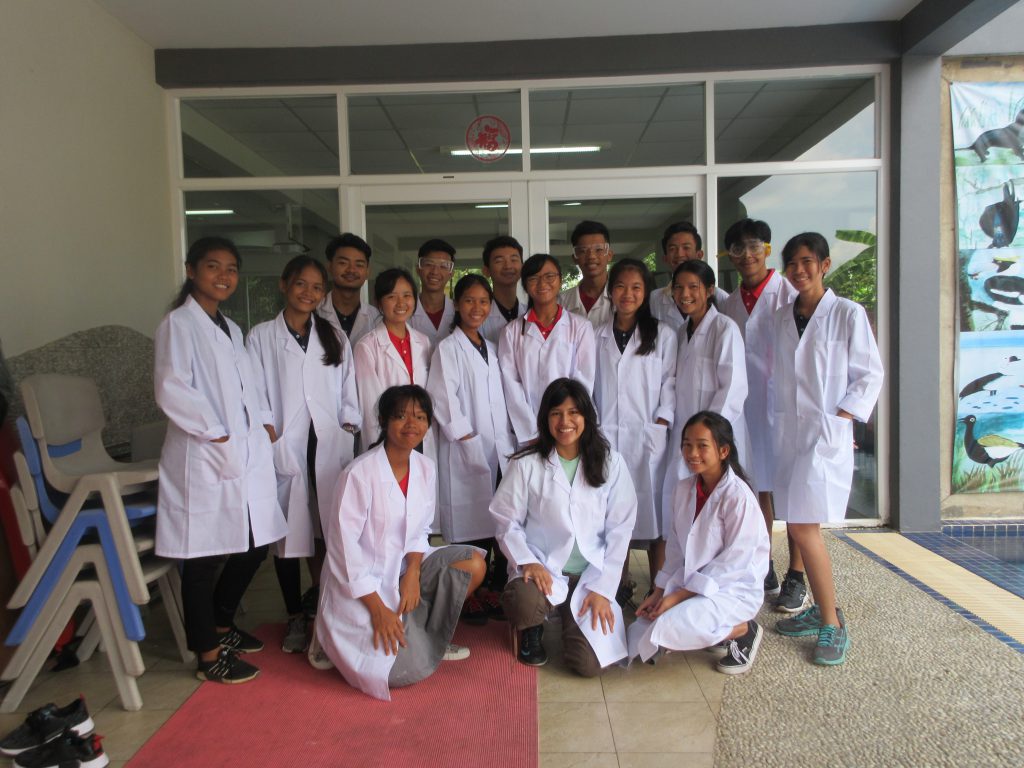
Tackling the Wonderful SAT TEST
SAT is literally in 3 days! That is scary but excited at the same time. In Math essential, 95% of the class time is strongly devoted to SAT math section preparation and I been doing that for over 4 weeks now.
Most of the time, we worked on filling the individual math content, such as the system of equation, right triangle, circle theorem, and remainder theorem. I pretty confident with the materials, but my two biggest flaws are the limited time and strategy that I approach the questions.
Jeff Boucher, our math facilitator, had guided me through the differences approach to solving a problem. Those approaches include the plugin, read the desire findings, and work back from the answer choices.
As I spend some time working on different types of problems, I started to see some patterns and methods that work for me.
The only way to beat the time constraint and the test is to practice. So, I hope everything going to turn out well.
See you SAT!!
Camkids 2018 Report
Developing educational add ons for Bambujaya
Bambujaya is a new private primary school that is planned to open later in 2019. Not like Liger, ISPP or Northbridge, Bambujaya targeted on middle-class families who want to send their kids to a school with a better atmosphere, teacher, and curriculum. The school is based on the Cambodian curriculum, but incorporate more STEM and challenging activities that supplement with the lesson to enhance student comprehension, collaboration, and creativity. The school hired leaders from the Liger to be the inventor for the add-on content. I was chosen to be one of the consultants to develop the add-on for the grade 2 books. I was happy, however, I know that it going to be different from the previous projects. This was a real work, I got clients expectation and due date, then I have to bring the best quality add-ons for them with no accuses. A quality add-on needs to have a clear learning objective, a unique cross-curriculum program, and useful resources.
Example of an add-on I wrote for grade 2 mathematics on a topic of Multiplication:
Name: Multiplication Olympics Competition
Duration: 40 – 60 minutes
Learning Objective: Students will apply their multiplication skill to solve various levels of multiplication activities in a competitive and time-constrained activity.
Description:
For this activity to work, it requires a lot of plannings from the teacher and many resources. But, besides that part, this activity is one of the most exciting, interacting, and hands-on activity of all the previous activities that had been created.
Preparation:
This activity is similar to a relay race, therefore, the number of activities that teacher will need a plan is the same as the number of students in each group.
The activity:
Students will be put into teams, and each team will be given a baton. The baton determines when a student can start their activity; they can only start when they have the baton. Within each team, every student will be assigned a number. Students who are assigned number one will get the baton and do the first activity. Once they are finished, they will pass the baton their teammate who will be doing the second activity. Students will complete their own activity and pass on the baton to their teammates until everyone on the team has done their activity. The fastest team to have every member complete their activity wins.
Note: Because of the requirement of hard work from students in doing this activity, the winning team deserves something. The teacher can award them with small gifts like candy or a pencil to motivate them. By giving the gifts to the winner, students may learn to understand the reality of a game, there will be a team that will do better than the others, and know not to get upset about it, but try harder the next time.

